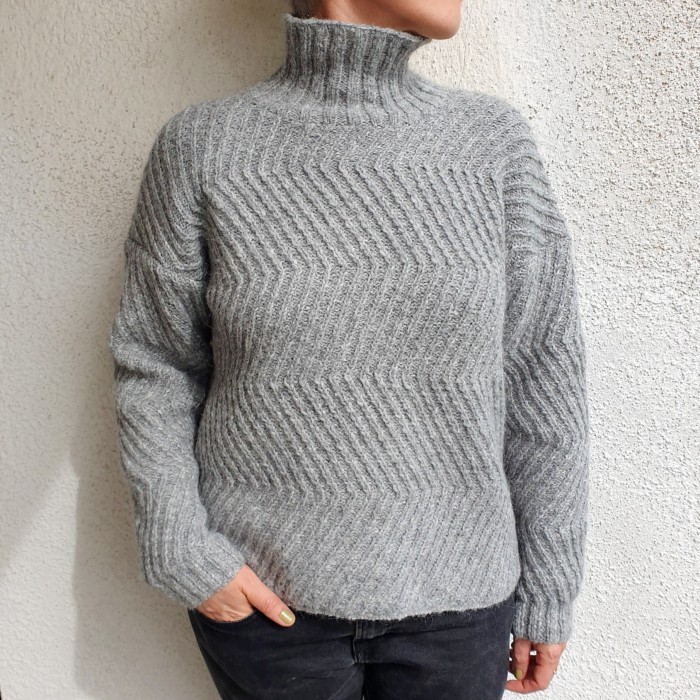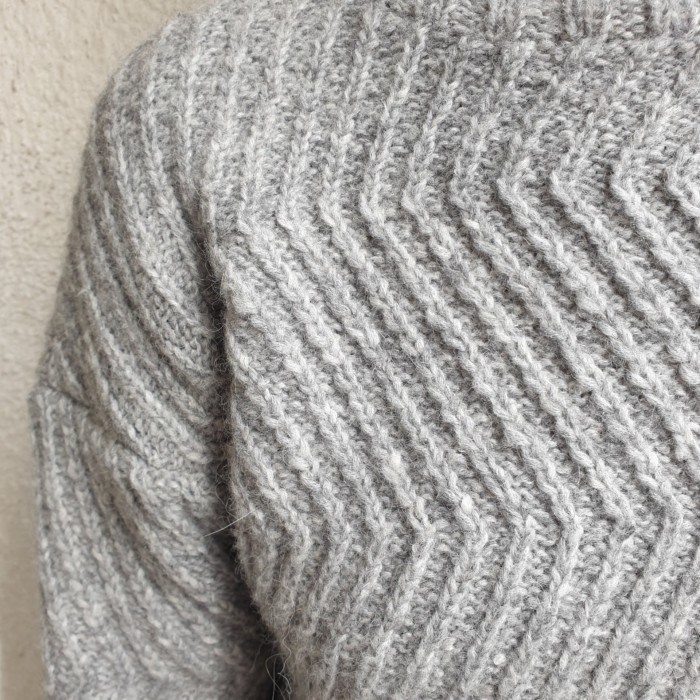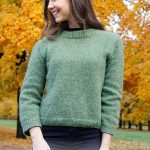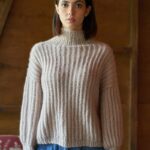This sweater features a distinctive textured pattern described as a “relief stitch,” creating a zigzag effect. The design is worked flat in separate pieces (front, back, and two sleeves) and then seamed. The pattern uses a combination of knit, purl, and slipped stitches to create the texture. The sweater has a straight, classic silhouette with a ribbed turtleneck collar. The yarn specified is Hobbii Divina, an alpaca, polyamide, and wool blend.
Skill Level: Intermediate (working from charts/written instructions with slipped stitches, seaming, picking up stitches).
Sizes: XS (S) M (L) XL (XXL)
Finished Measurements:
- Width: 48 (52) 56 (60) 64 (66) cm / 18.8 (20.4) 22 (23.6) 25.1 (25.9) inches
- Length: 46 (50) 54 (57) 60 (60) cm / 18.1 (19.6) 21.2 (22.4) 23.6 (23.6) inches
Materials Used:
- Hobbii Divina (65% Alpaca, 28% Polyamide, 7% Wool; 50 g (1.75 oz) = 150 m (164 yards)), Color: Classic Grey (4): 9 (9) 10 (11) 13 (13) skeins
- Knitting needles 5 mm (US 8)
- Circular needles 4 mm (US 6)
- One extra needle (for holding slipped stitches)
- Tapestry needle
Gauge: 10 cm x 10 cm (4” x 4”) = 24 sts x 28 rows in pattern.


Stitches Used:
- Knit (k)
- Purl (p)
- Relief Pattern 1 (P1) – involves slipping stitches to the back.
- Relief Pattern 2 (P2) – involves slipping stitches to the front.
- Rib stitch (k2, p2)
Pattern Notes:
- Flat Construction: The sweater is knit flat in pieces and seamed.
- Relief Pattern: The main body of the sweater is worked in a textured relief pattern that alternates between two variations (P1 and P2), creating a zigzag. The pattern provides detailed row-by-row instructions, and it’s crucial to follow the starting row for each sequence based on the size being made.
- Sequence-Based: The front and back are divided into five sequences, alternating between P1 and P2.
- Sleeves: Sleeves are also worked flat, starting with ribbing and then incorporating the relief pattern with increases. One sleeve begins with P1, and the other begins with P2.
- Neckline Shaping: The front neckline is shaped with bind-offs. The back neckline has fewer bind-offs.
- Turtleneck: Stitches are picked up around the neckline and worked in ribbing.
- Bottom up knitting.
Pattern Pieces:
- Front: Worked in five sequences of the relief pattern, with neckline shaping.
- Back: Worked identically to the front, with slightly different neckline shaping.
- Sleeves (2): One starts with P1, the other with P2, both incorporating increases.
Finishing:
- Sew shoulders together with mattress stitch.
- Pick up stitches for the turtleneck and work in ribbing.
- Sew sleeves and sides with mattress stitch.
- Weave in ends.
Abbreviations: Standard knitting abbreviations are used (st, k, p, inc, CO, BO, R).







